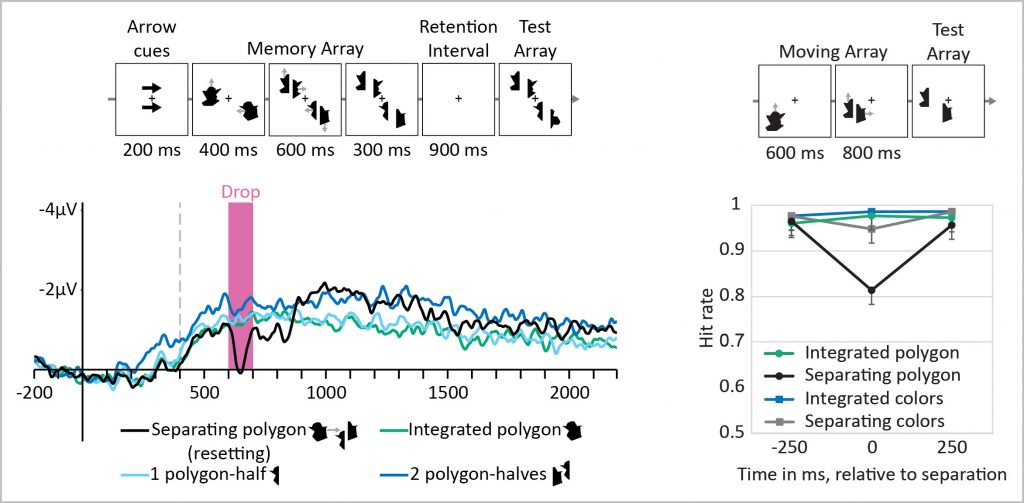Resetting the online contents of visual working memory
One of the major reasons visual working memory is tightly connected with behavior is its ability to actively modify the represented information according to changes in the environment. This updating process relies on a unique mapping between each visual working memory representation and an actual object in the environment, allowing working memory to access and modify the correct representation.
Importantly, when the mapping between the object and its representation is no longer available, a resetting process is triggered: existing representations are discarded, and new representations are encoded, along with a new valid mapping. We demonstrated that this novel process takes place in situations like object-separation and object-replacement. The resetting process has a unique neural marker: a drop in the amplitude of the CDA. Additionally, resetting creates a behavioral cost, i.e., a short duration in which salient changes in the objects are missed, presumably since the representations cannot be accessed.
A demonstration of the online change detection paradigm:

